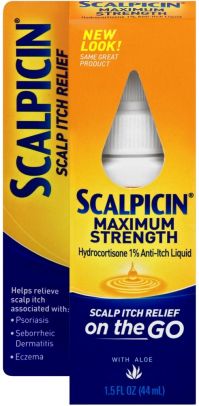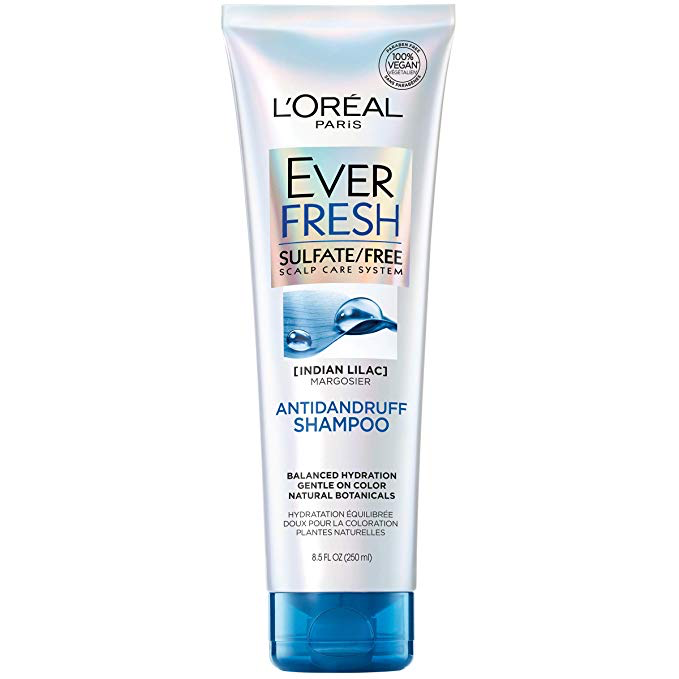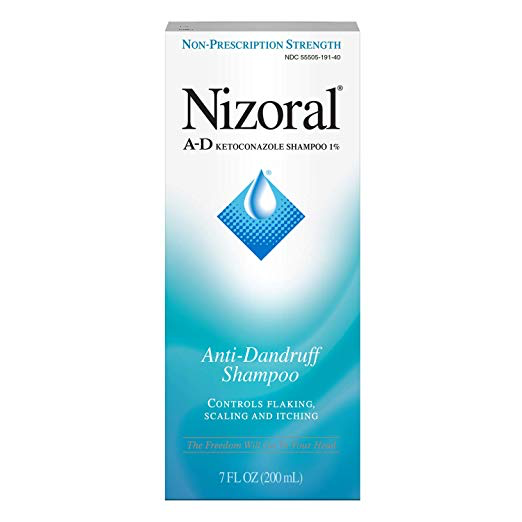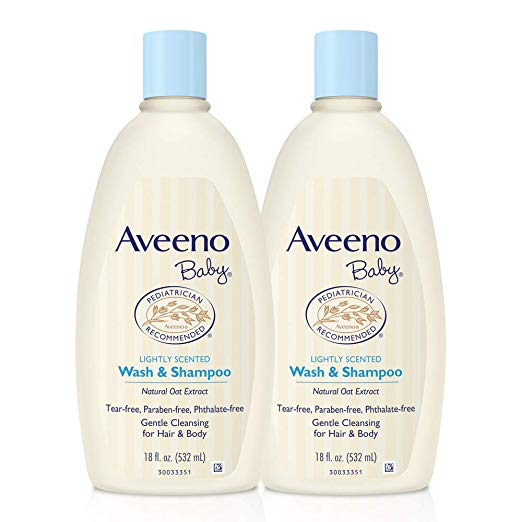Seborrheic Dermatitis
What Would You Like to Know About?
Overview
Seborrheic dermatitis (seborrhea) is a red flaky rash that tends to affect the scalp, ears, eyebrows, central face, beard and mustache regions in men, and central chest. It can also affect the groin, under breasts, or the navel. This condition can affect newborns (typically called cradle cap) and adults aged 30 and older (on the scalp, sometimes called dandruff).
Symptoms
Cause
Treatment
Unfortunately, there is no cure for seborrheic dermatitis. However, many medications may improve this condition significantly. The most common treatments are topical: shampoos, lotions, and creams. Treatments work by decreasing inflammation, removing scale, and some target yeast.
Note: because of flaking seen, individuals often believe that this is a dry skin or scalp problem and therefore wash hair less frequently. This may be counterproductive! Washing hair relatively frequently is helpful.
OTC Treatment Options
Scalp
Wash

Head & Shoulders Classic Clean Shampoo
(1% zinc pyrithione)
Nizoral Anti-Dandruff Shampoo (1% ketoconazole)
DHS Zinc Shampoo
Neutrogena T/Gel Daily Control 2-in-1 Dandruff Shampoo Plus Conditioner (1% zinc pyrithione)
Head & Shoulders Clinical Strength Dandruff and Seborrheic Dermatitis Shampoo (1% selenium sulfide)
Selsun Blue Dandruff Shampoo Medicated (1% selenium sulfide)
Neutrogena T/Sal® Therapeutic Shampoo – Scalp Build-Up Control. (3% salicyclic acid)
Instructions
OTC Tips
While seborrheic dermatitis is scaly, the underlying condition is that of inflammation, not dryness. Avoidance of shampooing due to the perception that regular shampooing will “dry the scalp out” will make things worse. The contrary is true. Daily shampooing is encouraged. There are many over the counter shampoos that are helpful for treating seborrheic dermatitis. It is best to use these OTC medicated shampoos at minimum 2-3 times/week. Zinc pyrithione is one of the more effective agents to treat seborrheic dermatitis. It tends not to be irritating and can be used regularly. Ketoconazole shampoo is also highly effective, has anti-yeast activity, and is well-tolerated. Salicylic acid shampoos work to exfoliate thick scale. We recommend tar shampoos only once to twice weekly; they can be effective but can also cause skin irritation and tend to have an undesired scent.
Many of these medicated shampoos can strip hair color. You may consider using an alternative medicated shampoo (see treatment for colored hair).
Scalp (Shaved/Thinning/Bald)
Wash

Head & Shoulders Classic Clean Shampoo
(1% zinc pyrithione)
- Nizoral Anti-Dandruff Shampoo (1% ketoconazole)
- DHS Zinc Shampoo
- Neutrogena T/Gel Daily Control 2-in-1 Dandruff Shampoo Plus Conditioner (1% zinc pyrithione)
Head & Shoulders Clinical Strength Dandruff and Seborrheic Dermatitis Shampoo (1% selenium sulfide) - Selsun Blue Dandruff Shampoo Medicated (1% selenium sulfide)
- Neutrogena T/Sal® Therapeutic Shampoo – Scalp Build-Up Control. (3% salicyclic acid)
Treat

Scalpicin
(1% hydrocortisone liquid)
Instructions
OTC Tips
A towel can be placed over the pillowcase to protect bedding from Scalpicin. This may minimize unwanted cosmetic results of residual product left in the hair.
While seborrheic dermatitis is scaly, the underlying condition is that of inflammation, not dryness. Avoidance of shampooing due to the perception that regular shampooing will “dry the scalp out” will make things worse. The contrary is true. Daily shampooing is encouraged. There are many over the counter shampoos that are helpful for treating seborrheic dermatitis. It is best to use these OTC medicated shampoos at minimum 2-3 times/week. Zinc pyrithione is one of the more effective agents to treat seborrheic dermatitis. It tends not to be irritating and can be used regularly. Ketoconazole shampoo is also highly effective, has anti-yeast activity, and is well-tolerated. Salicylic acid shampoos work to exfoliate thick scale. We recommend tar shampoos only once to twice weekly; they can be effective but can also cause skin irritation and tend to have an undesired scent.
Wash

L’Oreal Ever Fresh Antidandruff Shampoo, Sulfate Free
Nizoral AD Anti-Dandruff Shampoo (1% ketoconazole)
Kenra Professional Dandruff Shampoo (pyrithione zinc)
Instructions
Rinse scalp & apply shampoo & massage into affected areas (including brow & beard areas, if necessary). Leave in place for 5-10 minutes before rinsing. A moisturizing shampoo and conditioner may be used afterward if desired.
Initially, daily washing with medicated shampoos is recommended. Many people experience increased benefit if they use different shampoos with different active ingredients throughout the week. For color treated hair, we recommend L’Oreal Ever Fresh Anti-dandruff Shampoo, which is sulfate-free, up to five days per week along with Nizoral AD Anti-Dandruff Shampoo up to twice per week. Once the seborrheic dermatitis is under control, the frequency of shampooing with medicated shampoos may be decreased to twice weekly or as needed. Still continue daily washing with your regular shampoo.
OTC Tips
In high enough concentrations, sulfates found in most shampoos can strip color from dyed hair. Our OTC recommendations are considered safe for color treated hair.While seborrheic dermatitis is scaly, the underlying condition is that of inflammation, not dryness. Avoidance of shampooing due to the perception that regular shampooing will “dry the scalp out” will make things worse. The contrary is true. Daily shampooing is encouraged. There are many over the counter shampoos that are helpful for treating seborrheic dermatitis. It is best to use these OTC medicated shampoos at minimum 2-3 times/week.
Face & Body
Wash

Nizoral AD Anti-Dandruff Shampoo
- Head & Shoulders Classic Clean Shampoo (1% zinc pyrithione)
- Neutrogena T/Gel Daily Control 2-in-1 Dandruff Shampoo Plus Conditioner (1% zinc pyrithione)
- Head & Shoulders Clinical Strength Dandruff and Seborrheic Dermatitis Shampoo (1% selenium sulfide)
- Selsun Blue Dandruff Shampoo Medicated (1% selenium sulfide)
- Neutrogena T/Sal® Therapeutic Shampoo – Scalp Build-Up Control. (3% salicyclic acid)
Treat

Cerave Anti-Itch
LOTRIMIN (1% clotrimazole)
Aveeno Anti-Itch Cream 1% Hydrocortisone (1% hydrocortisone)
Cortaid 1% (1% hydrocortisone)
Micatin Antifungal Cream (2% miconazole)
Instructions
Nizoral AD Anti-Dandruff Shampoo (1% ketoconazole) may be applied & massaged into affected areas daily. Leave in place for 5-10 minutes before rinsing. Caution is advised to avoid eyes and rinse thoroughly.
CeraVe Hydrocortisone Anti-Itch Cream may be applied twice per day. Many dermatologists recommend limiting the use of hydrocortisone due to concerns about potential thinning of skin with prolonged use and caution about use near eyes which may rarely increase risk for glaucoma (increased pressure in the eyes) . Twice daily application on non-eyelid skin for a maximum of two weeks is generally considered to be safe. Lotrimin (1% clotrimazole) cream may be used in the off weeks or as a substitution for hydrocortisone.
OTC Tips
Hydrocortisone and stronger prescription variants are frequently used to treat seborrheic dermatitis. This class of medication helps to both reduce inflammation and itch. Medications such as Lotrimin and Micatin improve seborrheic dermatitis by attacking a yeast which is present on normal skin but may provoke seborrheic dermatitis in some individuals. These medications are often sold as treatments labeled for athlete’s foot, ringworm, or jock itch.
Hydrocortisone can help with seborrheic dermatitis that shampoos cannot treat. However, chronic use of topical steroids (particularly stronger prescription strength products) can lead to skin thinning if overused.
While seborrheic dermatitis is scaly, the underlying condition is that of inflammation, not dryness. Avoidance of shampooing due to the perception that regular shampooing will “dry the scalp out” will make things worse. The contrary is true. Daily shampooing is encouraged. There are many over the counter shampoos that are helpful for treating seborrheic dermatitis. It is best to use these OTC medicated shampoos at minimum 2-3 times/week. Zinc pyrithione is one of the more effective agents to treat seborrheic dermatitis. It tends not to be irritating and can be used regularly.
Babies (Cradle Cap)
Wash

Aveeno Baby Wash & Shampoo
Eucerin Baby Wash & Shampoo
Aquaphor Baby Wash & Shampoo
Instructions
Cradle cap may be treated with treated by gently washing daily with a baby shampoo. Thicker patches of scale may be treated with the application of baby oil, followed by gentle brushing with a soft brush, and then shampooing. Do not scratch too hard as this can cause irritation to the skin. Babies often grow out of this condition by 6-12 months.
Alternative & Complementary Treatments
OTC Recs
WASH
Maple Holistics Pure Tea Tree Oil Shampoo
Other options
Jason Normalizing Tea Tree Treatment Shampoo
Nature’s Gate Tea Tree Calming Shampoo
TREAT
Mustela Baby Cradle Cap Cream (with Borage oil)
Instructions
OTC Tip
While seborrheic dermatitis is scaly, the underlying condition is that of inflammation, not dryness. Avoidance of shampooing due to the perception that regular shampooing will “dry the scalp out” will make things worse. The contrary is true. Daily shampooing is encouraged. There are many over the counter shampoos that are helpful for treating seborrheic dermatitis. Tea tree oil shampoo has the best evidence of efficacy in the alternative treatment category. It is best to use these OTC medicated shampoos at minimum 2-3 times/week.
FINAL NOTE:
If using these OTC agents for a month are not clearing your rash, consider seeing your dermatologist, as you may have another condition causing your rash. In addition, your dermatologist can prescribe stronger versions of the described treatments above.


